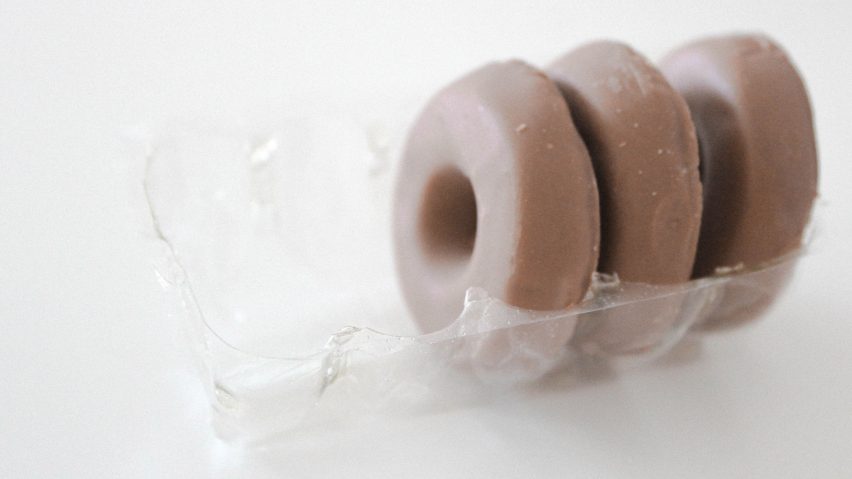
Margarita Talep develops algae-based alternative to single-use plastic packaging
Chile-based designer Margarita Talep has created a sustainable, biodegradable alternative to single-use packaging, using raw material extracted from algae.
Disappointed by the abundance of non-recyclable materials currently used to contain food products, Talep decided to develop her own eco-friendly packaging that would stand in for plastic.
Particularly concerned that we commonly allocate an indestructible material to packaging that is quickly disposed of, it was essential that the resulting organic material would easily break down.
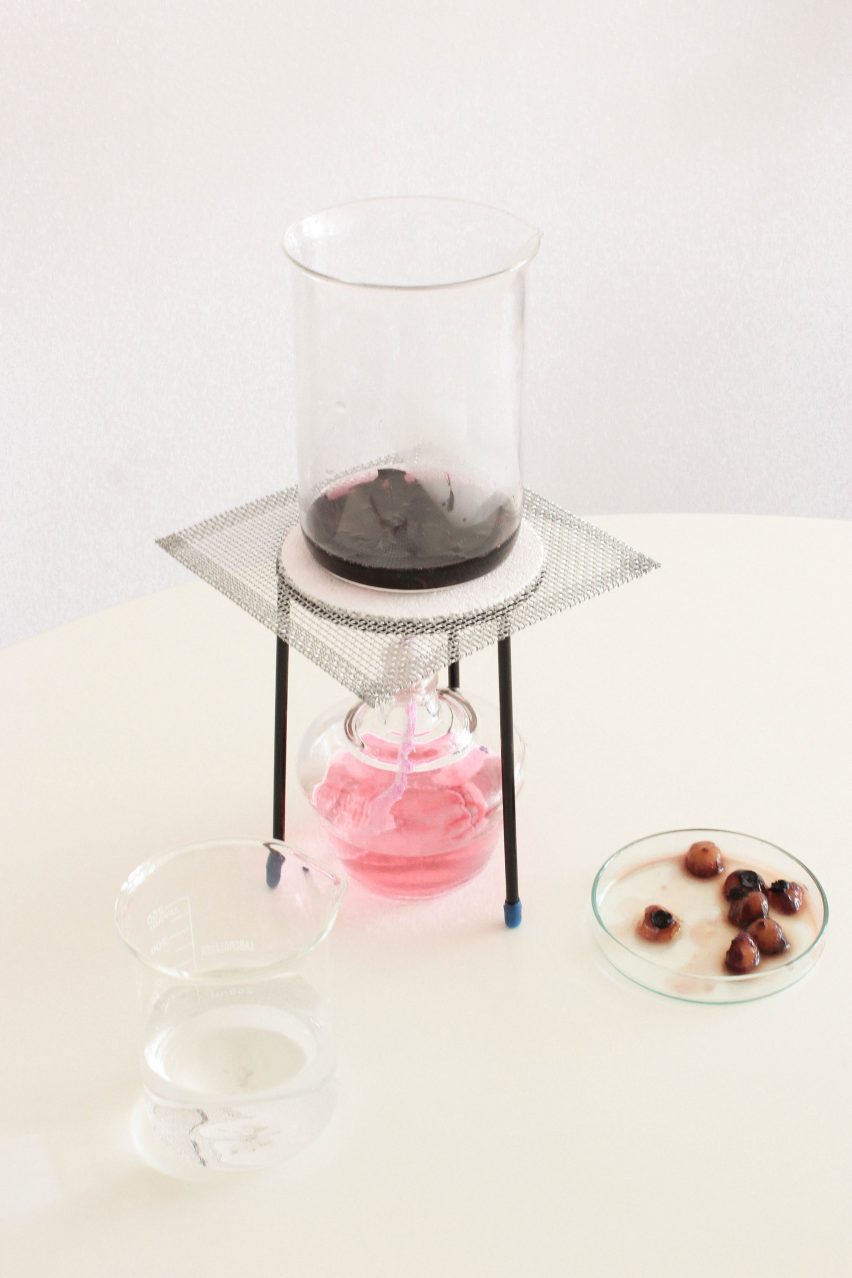
According to the designer, the material only includes natural matter, including the dyes used to colour it, which are extracted from the skins of fruits and vegetable such as blueberries, purple cabbage, beetroot and carrot.
The basic mixture is made up of a polymer, a plasticiser and an additive, with the amounts of each ingredient varying depending on the desired consistency of the final product.
The polymer and main ingredient in this case is agar – a jelly-like polysaccharide substance that is extracted from red algae by boiling. Talep adds water as a plasticiser and natural dyes to add gentle colour.
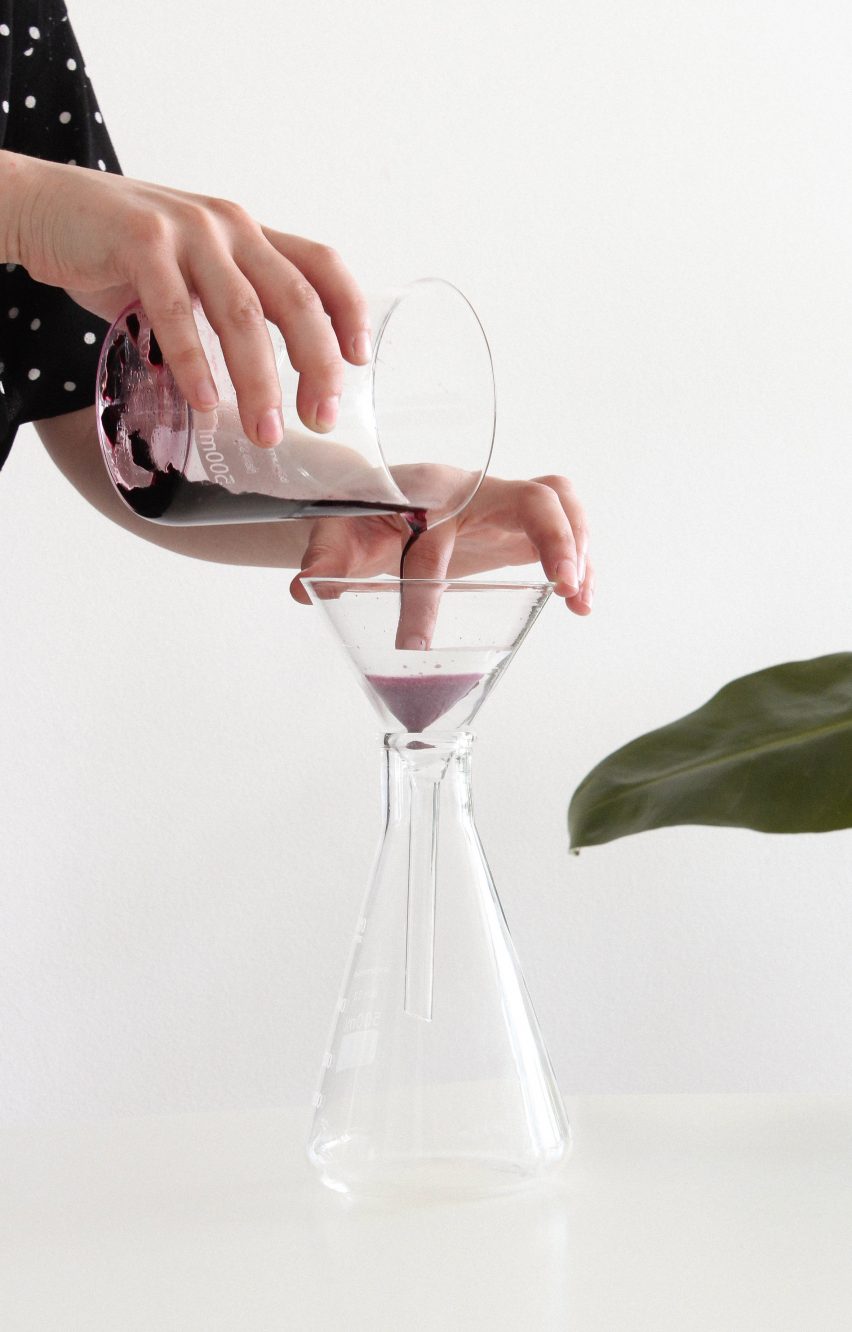
To make a material that bears a close resemblance to thin plastic, Talep boils the agar mixture to around 80 degrees celsius, before transferring the molten liquid onto a mould.
When the liquid drops to a temperature below 20 degrees celsius, it takes on a gel-like consistency. This is then left to dry in a well-ventilated environment with a constant temperature, until it becomes similar to paper or thin plastic.

The bioplastic packaging is especially suited to containing dry food products. It is best sealed with heat rather than glue in a bid make the end result as natural as possible.
As the designer explains, the versatility of the algae-derived material means that it has the potential to generate many different types of bioplastics – some more rigid and others more flexible – just by altering the proportions of polymer, plasticiser and additive in the mixture.
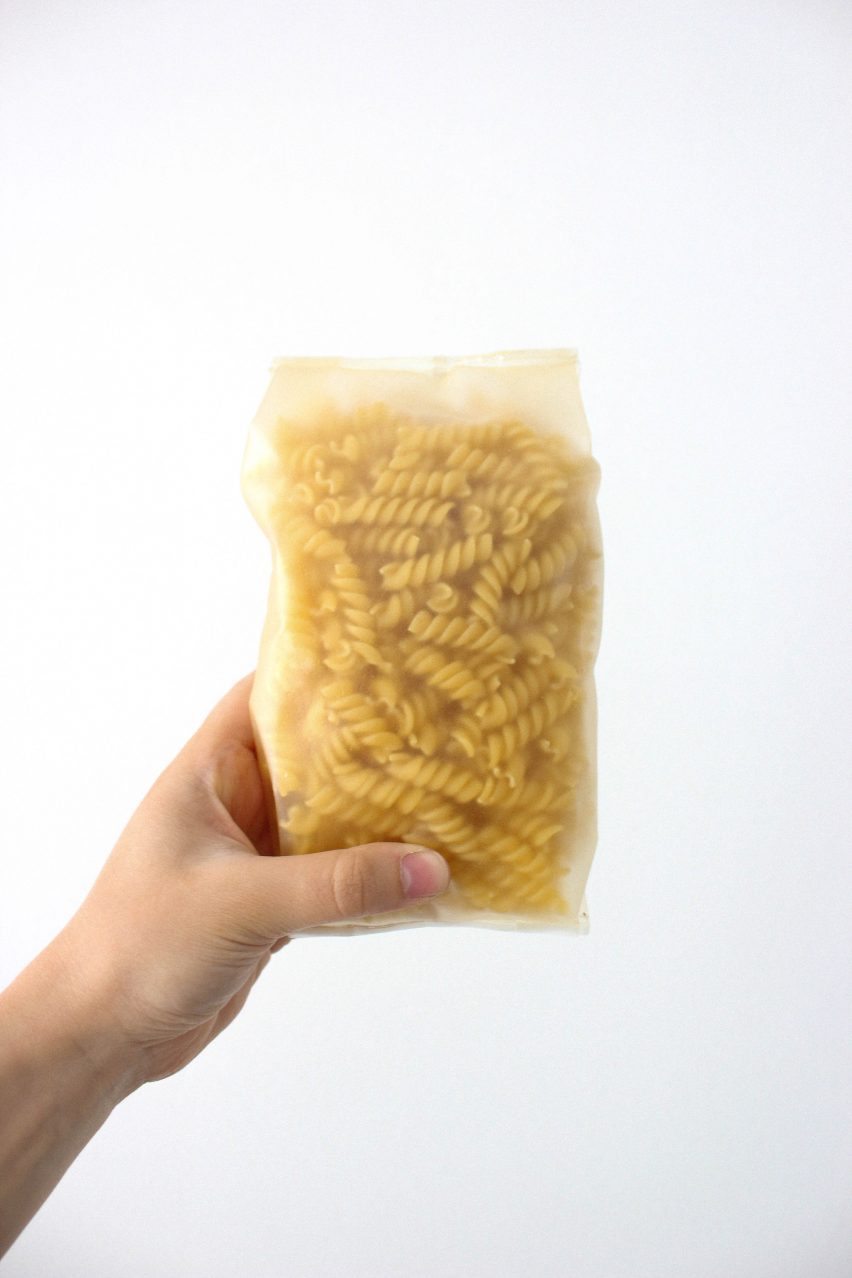
Intended as a replacement for single-use or disposable plastics, Talep's algae packaging is designed to biodegrade in around two to three months, depending on the thickness of the material and the temperature of the soil.
Despite some bioplastics being criticised for only decomposing in warm temperatures over 30 degrees celsius, Talep insists that, while biodegradation is indeed slower in cooler, winter temperatures, it is not less effective.
The material takes around two months to decompose in summer temperatures , depending on the thickness, and about three to four months to decompose completely in winter.
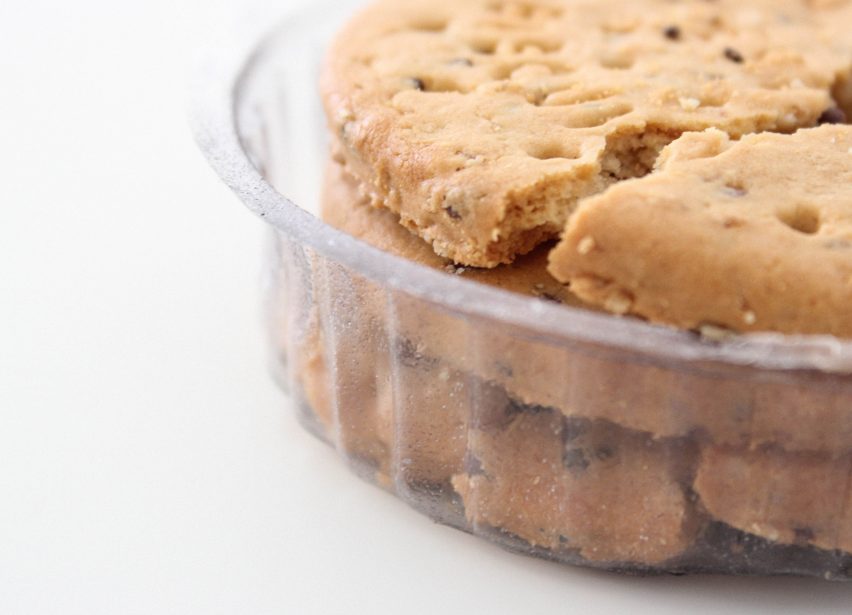
"I believe that bio-fabrication will be an important part of future industries," said Talep. "As long as all the processes of extracting these raw materials and their manufacture are done with environmental awareness."
"But it is not enough just to create new materials," she continued. "These different solutions to the huge environmental problem must work in parallel with other action."
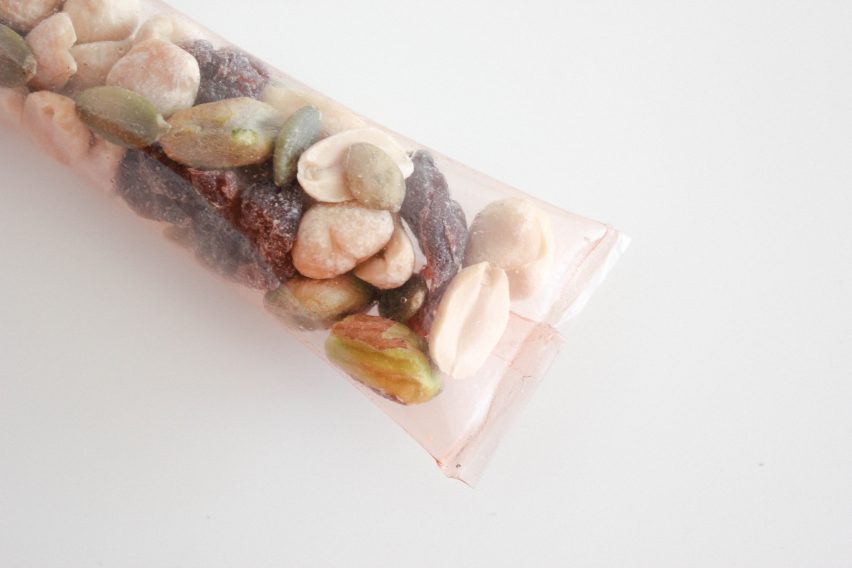
"Different nations should implement action plans for reducing the amount of plastic waste produced by introducing more circular economy projects, keeping plastic in a cyclical system to prevent it from ending up at landfill or in the sea," Talep suggests.

Designers are increasingly experimenting with bioplastics made from materials as diverse as corn starch and beetle shells.
In a similar project, Italian designer Emma Sicher combined food waste with bacteria and yeasts to create disposable packaging, in a bid to provide a sustainable alternative to plastic.